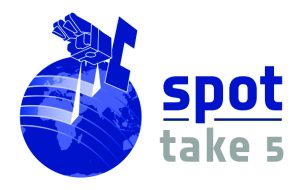SPOT5 (Take5) reprocessed L2A data are online
![]() =>
=>![]() The SPOT5 (Take5) project just released a new version of all SPOT5 (Take5) L2A data to account for several small issues encountered during the first processing :
The SPOT5 (Take5) project just released a new version of all SPOT5 (Take5) L2A data to account for several small issues encountered during the first processing :
- for two very bright desert sites (Libya, Tunisia), one cloud threshold was too low, and large parts of the desert were classified as clouds. The threshold has been changed specifically for these two sites.
- the level 2A of Northern sites with a persistent snow cover were not issued in the first version. It has been solved, but as it is not possible to estimate aerosols above snow, they have been processed with a default Aerosol Optical Thickness value, as long as they are fully covered by snow.
- the shadows below large clouds were often not detected. The shadow detection method has been completely reworked resulting in largely enhanced cloud shadow masks.
- the Aerosol Optical Thickness images were a little too noisy, and the spatial smoothing of the values has been increased.
- one site had been omitted because of a problem of DTM, which had been unnoticed (our processor is a prototype) : BrailaCasasuRomania
- one site (DevonUK) had a poor geometry because of a bad reference image. The reference image has been changed and the Level1C and level 2A have been reprocessed
- The older version has been removed from the distribution site and replaced by the newer version. The reprocessed data are available here :
- https://spot-take5.org
- In order to avoid confusion between the older and newer version, you may check that the following HTML tag contains 2016 instead of 2015.
- <DATE_PROD>2016-xx-xx</DATE_PROD>











